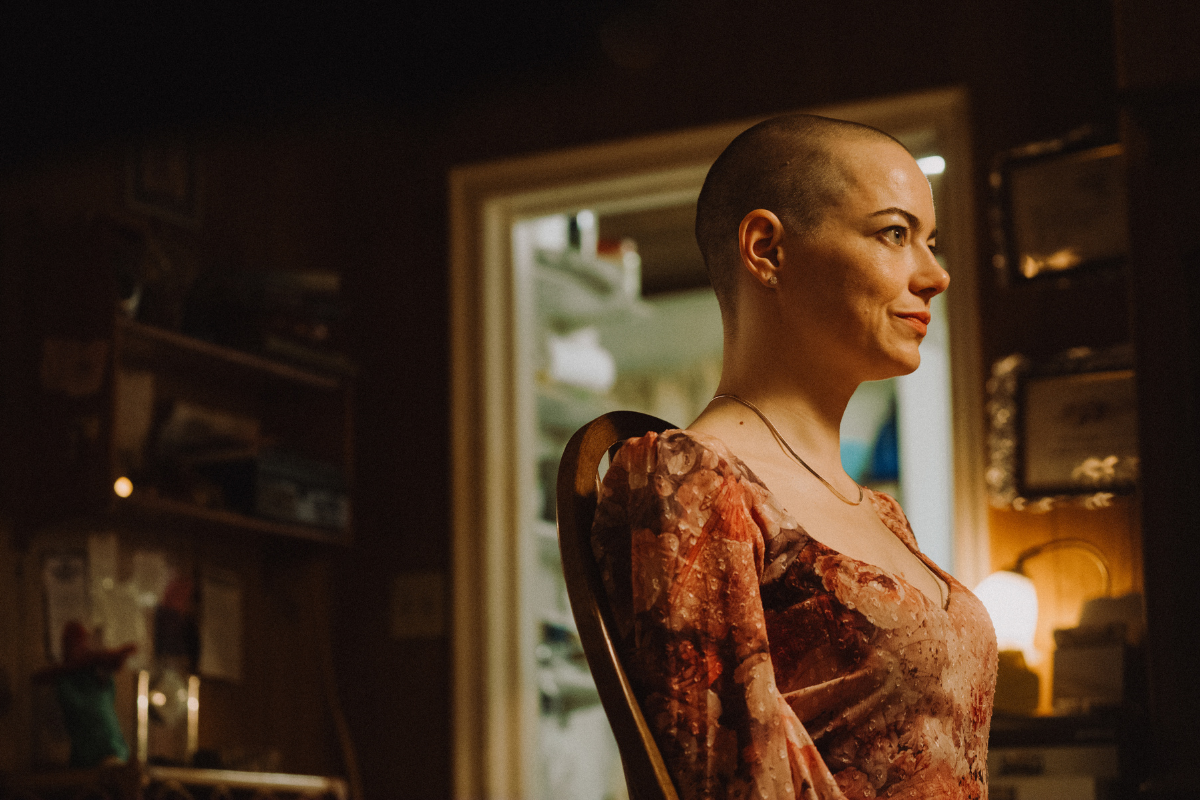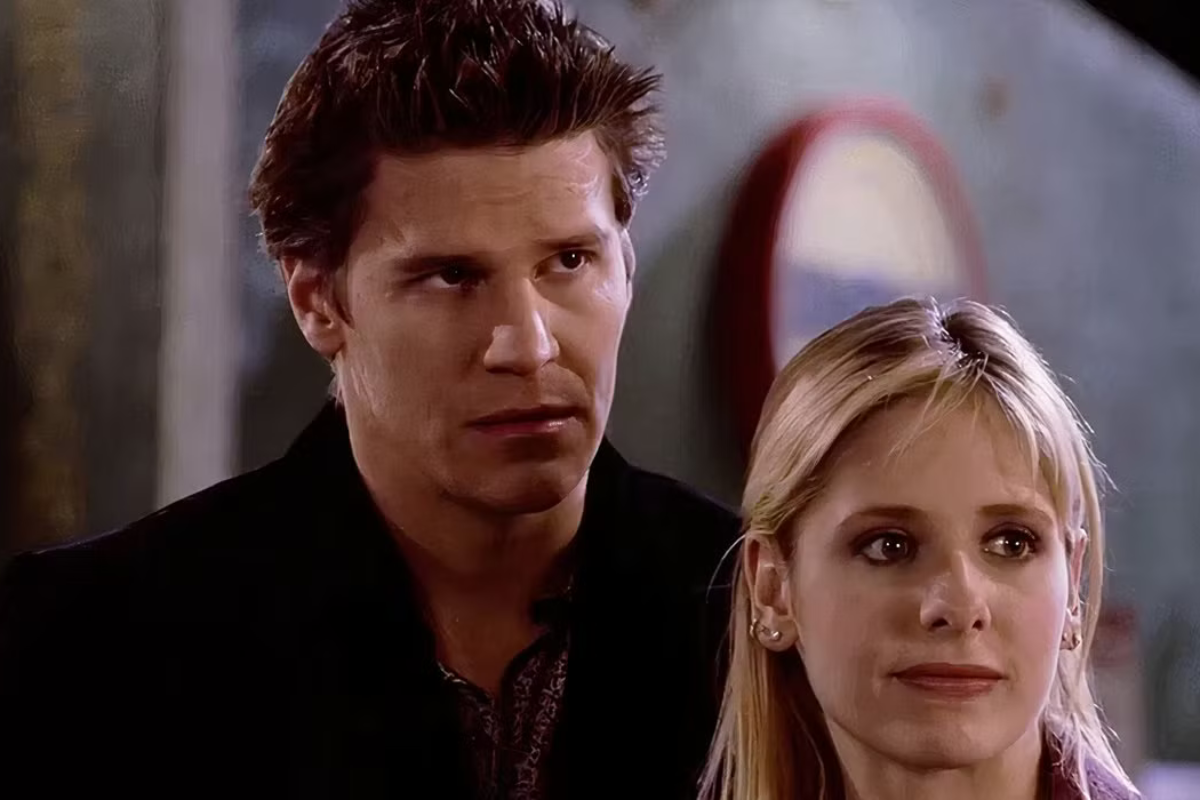BREAKING IN: Stop! Do NOT Write That Film Treatment!
You’ve probably heard that writing a film treatment is a great way to plan your spec script before writing it. Staton Rabin explains why you should ignore that advice.
Like most great "quotes" attributed to famous people, the one I'm about to mention is probably apocryphal. But some people claim that Abraham Lincoln once said, "If I had eight hours to chop down a tree, I'd spend the first six sharpening my axe." Whether Old Abe the railsplitter really said that or not, it's great advice—not only for lumberjacks, but for screenwriters. The key to writing a great screenplay is to spend most of your time planning the story before you begin to write it. But, what kind of outline works best to "sharpen your axe"?
THE "BLUEPRINT" FOR YOUR SCRIPT: SHORTER IS BETTER
My advice to writers has always been the same: start with the shortest possible version of your story. A one, two, or three-sentence story concept, properly written, is the best tool you can possibly have to check out whether your story is working before you invest your time in writing a screenplay. Only when that concept is working perfectly as a "map" for your plot—and you might want to run it by a script analyst or screenwriting instructor, to be sure—should you go on to the next stage.
After that, writing a story synopsis (which is not the same as a treatment; more about treatments, later) of no more than one page double-spaced, would be a good next step. Once you have that one page nailed down and are certain it will work as a movie, from there you might want to write a slightly longer synopsis—perhaps two or three pages (double-spaced), tops. Remember: a synopsis should focus only on the plot: what your main character does in the story. Other major characters will appear in your synopsis only as they arise in the plot. It's a simple, third person, present-tense telling of the story in a continuous narrative, as if you were telling a friend about the plot of a movie you just saw. There should be no "character lists," no screenplay-like jargon, and the synopsis should include only significant plot events rather than describing every scene. In a synopsis, information about characters' "feelings" should be kept to a bare minimum, and backstory should be limited to what is absolutely necessary to tell the story. Dialogue, if any, should be limited to a powerful line or two. Nothing should be "explained to the reader" that isn't (ultimately) going to be seen or heard on the movie screen.
The synopsis, by the way, is for your own use only (unless you send it for analysis by an industry pro) and is not for public consumption. If any producer, having already read or heard your concept or "pitch," asks to see a synopsis instead of requesting a look at your screenplay, you have a dilemma and your chances of getting your script read there become low. While a very brief and well-written story concept or pitch can grab a producer's attention, it's extremely difficult to interest anyone in reading a screenplay based on a synopsis—which is normally a dull, dry telling of the story. My hope for you is that any producer interested in your movie idea after reading or hearing your pitch or concept, will request a look at your completed screenplay (which should be ready to send) rather than a synopsis. If he requests a synopsis instead, your choices are either to rewrite your synopsis so that it becomes a beautifully crafted "selling tool" that makes your story sound as gripping as possible—without indulging in any hype or self-praise—or to skip that producer. In some cases, screenwriting contests also request a synopsis of your script—or you meet with a film producer to pitch your script, and he wants you to leave a "one-sheet" behind—so that's another type of situation where you might need one.
After you write a synopsis for your own use in planning your plot, you might go to index cards—writing just one sentence on each card to sum up what happens in each scene of your script. How many cards do you need? It varies tremendously, of course, but 50 is about right, since there are about 50 scenes in a typical two-hour movie. I like index cards because you can easily shuffle them around or toss some of them out, to test out if your scenes are in the right order, or whether you might have more scenes than you need. While there are many ways to organize a script using computer software, I still prefer being able to move things around with my hands instead of on a computer desktop.
Of course, working with index cards is just one of many ways to plan your story. Other writers prefer storyboards, "step sheets," traditional outlines, or other methods. You should use what you feel is most useful for you.
WHEN (AND WHY) NOT TO WRITE A FILM TREATMENT
But, what about writing a film treatment? If a typical feature film script is, say, perhaps 110 pages, wouldn't it be better to have the longest possible outline before going ahead and writing the script? My answer to that is a very loud and obnoxious "No!" In my experience, the longer your outline or "treatment," the less useful it is for planning your script. The goal of planning a story before you write is to see the "bone structure" of the plot. The longer and more detailed your outline, the more difficult it will be for you to see that structure and make sure it's working before starting to write your screenplay. Typically, treatments range from about 10 or 15 pages to 30 or more. They are hardly ever useful for screenwriters who are trying to plan a script before writing it.
So, why do you often hear about "treatments" in the film industry? There are several reasons for this.
Some people in the industry simply don't know the difference between a synopsis and a film treatment and use the terms interchangeably. If someone asks to see your "treatment," ask them about how many pages they'd want it to be. That will at least give you a clue about whether they might really mean a plot synopsis and not a treatment. If they say they want to see about two or three pages, they are not talking about a treatment, they actually mean a plot synopsis.
If what they really want to see is a treatment, writing one of these is a huge undertaking in terms of your time and effort. If your script is not already under contract, you'll have to decide whether it's worth your time. Your decision might depend on whether this is an important producer, or if you think you might have a use for the treatment beyond this one producer's request.
TIPS FOR WRITING A FILM TREATMENT (ONLY IF YOU MUST!)
When you are hired by a film producer to write—or significantly rewrite—a script, you may be asked to write a treatment for the producer before creating your first draft of the screenplay. I assume the reason they ask for this is that they want to make sure the story is on the right track before you write the first (or next) draft of the script. There are usually a number of people involved in the development process for a movie. A treatment is one way for them to make sure everyone is onboard with what you have in mind before you actually write (or rewrite) the screenplay. The purpose is not really to help you, it is mostly to help them. As long as people are paying you appropriately to write a film treatment (the Writers Guild of America has specific guaranteed minimum payments for writing treatments and screenplays if you're working for a WGA signatory producer, or one who will pay WGA rates, regardless), doing what they ask would be part of the job.
What are some tips for writing a treatment, in case you ever have to write one?
Unlike synopses, film treatments usually include snippets of dialogue, have a somewhat "filmic" style and rhythm, are evocative in terms of time and place, and give a "feel" for the characters, mood, and visual style of the movie. You are not just telling the story. You are also demonstrating your talents as a screenwriter and giving the reader a "taste" of the experience of reading a great script. That's the same feeling they'll have when watching the movie. All of this must be done seamlessly—in the course of "telling" the plot of your story—not in separate sections of your treatment.
Whether or not you've already written your screenplay, a treatment is created by imagining the way your finished movie is going to look up there on the screen, and the experience an audience will have in watching it as the story unfolds. All of that has to be conveyed (along with the plot, of course) in the treatment, as if the movie already exists. But knowing what to leave out of your treatment is really important, too.
Although you can find model treatments online, there is truly no single set of instructions anyone can give you about how to write a film treatment. Each one is a unique and compelling work of art that demonstrates your skills as a screenwriter in microcosm while simultaneously conveying the plot of the movie in the present tense, focusing on the major roles as you tell the tale. You might say it's a hybrid of a synopsis and a screenplay in compact form. In my view, a 10 or 15-page treatment is long enough.
But there's really never any compelling reason why you would want to write a film treatment if your spec script is not under contract, or you weren't hired to write or rewrite a script. Unless it's Spielberg (or someone like him) doing the asking, I wouldn't write or rewrite for anyone for free. And make no mistake: writing a film treatment is hard work.
Keep in mind that after carefully planning every aspect of your plot, if you also write (for example) a 30-page film treatment, you can easily "burn out" all your creative energy on that treatment before even beginning to write your screenplay. Writers need a sense of discovery when writing their scripts, so that they can remain fully engaged in the process. Certainly, you'll want to plan your plot very carefully before beginning to write your screenplay—but not to such an extent that you are "writing by rote," and are no longer open to the happy accidents that can happen along the way.
It also should be noted that it's extremely unlikely that you, as an "unproduced" screenwriter, will sell a script based on a treatment alone. Hardly ever do film producers buy treatments from unknown screenwriters when no script has been written yet. If you are not already established as a successful screenwriter and want to sell your movie idea, you will probably have to write a spec script.
Download Screenplay Treatment 101 FREE Today and Learn How to Write a Film Treatment Like a Pro!
EXCEPTIONS TO THE RULE
There's are a few exceptions to that rule—mostly involving remarkable true stories. Let's say you have an incredible life story: you were Winston Churchill's painting instructor for 10 years, he told you all his most intimate never-before-told shocking secrets (I'm not suggesting he had any!), and you now want to sell your story as a book and movie.
Or maybe you've purchased the exclusive "life rights" of someone who is either a high-profile celebrity, or has a truly amazing story of survival or outrageousness to tell, and they've consented to let you write a screenplay based on their life experiences.
Or perhaps you don't really consider yourself a screenwriter, but you've got your hands on an incredible true story that people will be dying to see and read about. Or you've optioned a best-selling nonfiction book like THE WOLF OF WALL STREET (which was made into a good movie directed by Martin Scorsese), and you want to produce the film yourself.
In cases like those I've described above, writing a film treatment and having an agent shop it around might make sense. But first be absolutely sure that the story you're presenting is yours to tell from a legal standpoint, is truly unique, true, and remarkable, and has slam-dunk commercial appeal. You might want to get a professional opinion on that before going ahead. Otherwise, to say it in Pig Latin: ixnay on the eatment-tray.
Sign up for our newsletter, and get a FREE download on how to write a synopsis!
Staton Rabin is a screenplay marketing consultant, script analyst, and "pitch coach" for screenwriters at all levels of experience. Staton is available for script reading/analysis and consultations and can be reached at Cutebunion@aol.com. Follow Staton on Twitter @StatonRabin.
- More articles by Staton Rabin
- FREE Download - How to Write a Synopsis
- FREE Download - How to Write a Treatment
- Balls of Steel: Debate and Tips for Outlining a Script
Get Story Outlining Tips in our OnDemand Webinar
10 Steps to a Bullet-Proof Outline...Before You Start Writing Script Pages
- Learn how to create a detailed story outline and identify any weak story elements in your writing
- Discover how to write a strong story outline or beat sheet
- Leave the webinar fully equipped to write a solid first draft—plot, story, conflict, and character development
Staton Rabin (www.StatonRabin.com and www.ScreenplayMuse.com) is a screenplay marketing consultant, script analyst, and "pitch coach" for screenwriters at all levels of experience. She is also an optioned screenwriter, has been a reader for Warner Bros. Pictures, New Line Cinema, William Morris, and major screenwriting contests, and was a frequent guest lecturer at NYU. Her novel Betsy and the Emperor was at one time in development as a movie with Al Pacino attached to star. Staton Rabin is available for script reading/analysis and consultations and can be reached at Cutebunion@aol.com.







